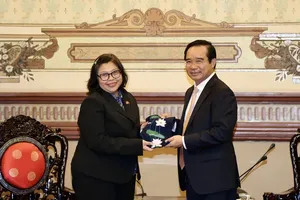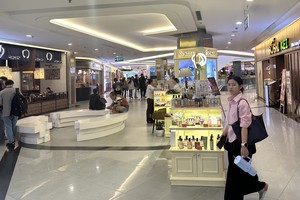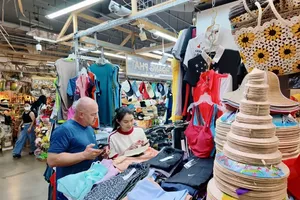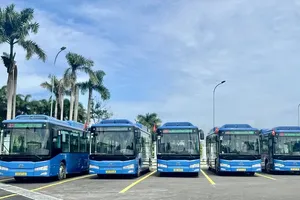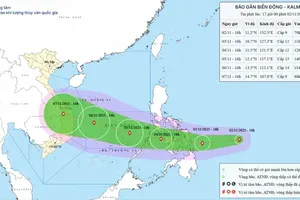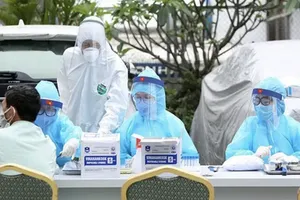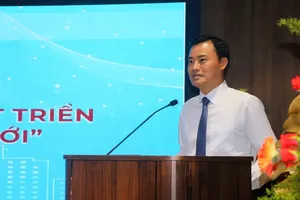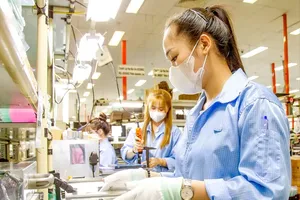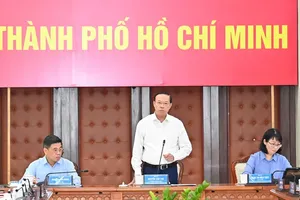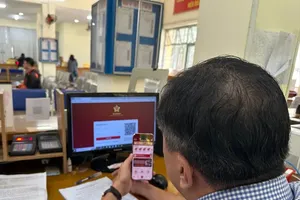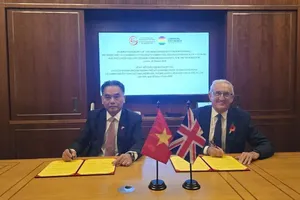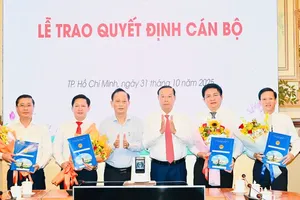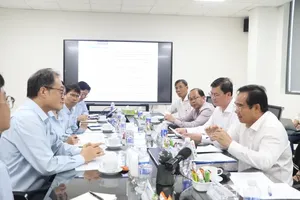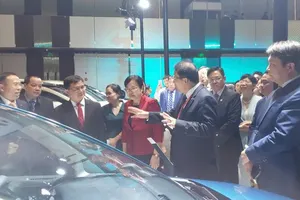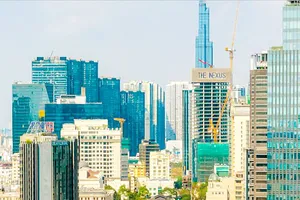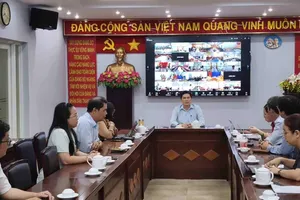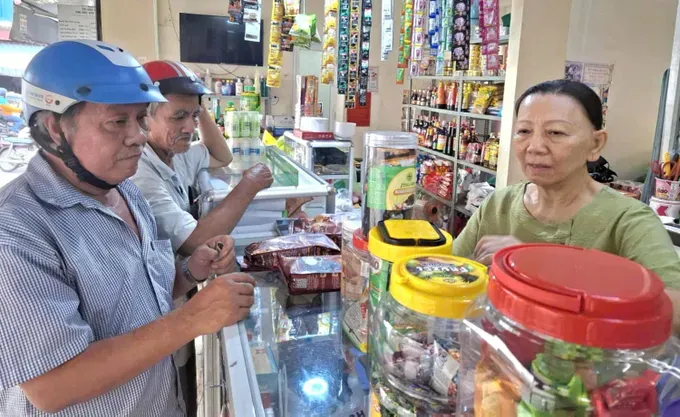
Faith meets life in city’s rhythm
“The pagoda is handing out gifts this afternoon, Ms. Dung! Don’t forget your ticket”, “Can you pick one up for someone else, Mr. Tu? I need to get one for Lua, who lives nearby.”
It’s a lively scene, with the sounds of neighbors bustling in Alley 205 on Tran Van Dang Street (Nhieu Loc Ward), right outside Bat Nha Pagoda. Residents are calling out, reminding each other to come and receive gifts for the Vu Lan (Ullambana) festival. Amidst this cheerful din, Venerable Thich Minh Thien, the pagoda’s abbot, is meticulously arranging each gift portion.
“This alley is, roughly, half parishioners from An Phu Parish, and the other half are Buddhists, with a few households who don’t follow any religion,” the Venerable shared. “But it doesn’t matter. Anyone in the surrounding neighborhoods who is facing hardship is welcome to receive a gift. We distribute them three times a year, maybe 200 to 300 portions each time. It’s all thanks to the parishioners, the Buddhists, and just the kind-hearted donors right here in this alley, all pitching in together.”
This neighborhood bond, it seems, is cemented by the strong personal connection between the two local religious leaders. Venerable Thich Minh Thien recounts the tradition: “Every morning on the first day of Tet, I and Pastor Le Hoang Chuong, the head of An Phu Parish, go door-to-door to wish everyone a happy new year.”
It’s a two-way street. Come Christmas, representatives from Bat Nha Pagoda and local Buddhists bring flowers over to congratulate the pastor and his parishioners. “Conversely,” the Venerable notes, “during the Buddha’s Birthday celebration, Pastor Le Hoang Chuong and his parishioners come to the pagoda to present flowers and lend a hand preparing gifts for the poor and disabled.” These simple, back-and-forth visits have become a cherished custom in an alley that, while physically narrow, is overflowing with humanity.
Just a short distance away, in Alley 102 on To Hien Thanh Street (Hoa Hung Ward), a small corner shop has become a well-known hub for compassion. It’s “Nhan Ai” (Humanity) grocery store. Founded by the local Hoa Hung Church, the shop reportedly receives donations daily. Some people send over a bag of rice, a box of instant noodles, or a bottle of cooking oil; others contribute a small packet of seasoning, a blanket, or even a pair of new sandals.
For the store’s manager Do Thi Hoang Thanh, it’s a constant, welcome flow. “The profit from the shop, combined with all the contributions from both parishioners and Buddhists, is transferred back to the pastor,” she explains, while logging the new items, “and he uses it to organize gift distributions.” This happens two or three times a year, with hundreds of gift portions going out to low-income households within the ward and the local parish.
The banks of the Nhieu Loc Canal are dotted with pagodas. For long-timers like Ms. Tu, the sound of the pagoda bells is a comforting “daily soundtrack.”
“In the morning, it’s like a gentle reminder,” she says. People stop in to light incense or pray. Sometimes, old women rest after the market, or motorbike taxi drivers pop in for water. According to Ms. Tu, these small habits become “spiritual anchors” in a hectic life. She reflects, “Over here, the religions, the pagodas are just like the canal itself. They nurture a sense of peace, so that we can all live together in harmony and with kindness.”
During major festivals, its a common sight: Northern-sect Buddhists from Phap Hoa Pagoda, Catholic parishioners from Xom Lach Parish, Muslims from the Nurul Ehson Mosque (Phu Nhuan), and the local ethnic Chinese community all reportedly visit each other and join hands in organizing events. And it goes the other way, too. Come Christmas, the fasting month of Ramadan, or the Buddha’s Birthday celebration, the monks and Buddhists from Chantarangsay Pagoda pay visits to offer their congratulations. It’s a practice that fosters a palpable atmosphere of unity and friendship.
HCMC is also a crossroads for ethnic festivals. Residents along the Nhieu Loc Canal are accustomed to lively days at the Khmer Chantarangsay Pagoda. Events like Chol Chnam Thmay, Sen Dolta, and Ooc-om-boc have become “community days,” drawing in Khmer, Cham, and Chinese residents as well.
Ooc-om-boc is particularly vibrant, with Ghe Ngo (traditional Khmer boat) races, floating lanterns, and cultural activities creating a unique festival atmosphere. As Venerable Chau Hoai Thai, Chantarangsay Pagoda’s deputy abbot, explains: “The festivals of the Khmer people are a gathering place for many different ethnic and religious communities.”
Common aspiration
From the sound of a pagoda bell in one small alley and a church bell in another, to the vibrant festival grounds of the Khmer community by the canal, it’s all part of the same story. Faith and daily life, religion and ethnicity, are all woven into the everyday rhythm of HCMC. Every small gesture of kindness, every shared community celebration, quietly works to strengthen the bonds of mutual affection.
According to the HCMC Department of Ethnic and Religious Affairs, the post-merger city is home to over 13.6 million people. Among them are 510,000 individuals from 53 different minority ethnic groups. The largest communities are the Chinese, Khmer, Cham, and Cho Ro, followed by the Muong, Tay, Thai, Nung, and Ede. It’s this mix that creates HCMC’s rich and highly characteristic cultural tapestry.
The city also officially recognizes 11 religions, encompassing 33 distinct organizations, over 2,970 religious establishments, and 3.9 million believers (43 percent of the total population). This ecosystem is reportedly supported by over 13,000 religious dignitaries and nearly 7,000 monks and nuns. This sheer diversity, it’s argued, has become the foundation for these strong community bonds.
Venerable Danh Lung, Deputy Head of the Executive Board of the Vietnamese Buddhist Sangha (VBS) in HCMC, notes: “The city’s Party Committee and government have always enacted timely policies, building trust so that all ethnic and religious groups feel secure in their work, study, and contributions.”
HCMC is a rendezvous point where diverse values harmonize. Each ethnic and religious group shares a common aspiration: building a civilized, modern, and compassionate city. This companionship transforms diversity into strength, turning “different” into “complementary” and forging a city profoundly rich in cultural and spiritual life.
In its implementation of the National Target Program for socio-economic development in ethnic minority regions (2021-2030), HCMC has reportedly dedicated over VND621 billion (US$24.4 million) across its 168 localities. This investment has funded 113 infrastructure projects, including transport, electricity, and water, and has financed the construction or repair of 726 homes for households in need. This effort, it’s stated, is contributing directly to promoting economic, cultural, and social development for the city’s minority ethnic communities.

